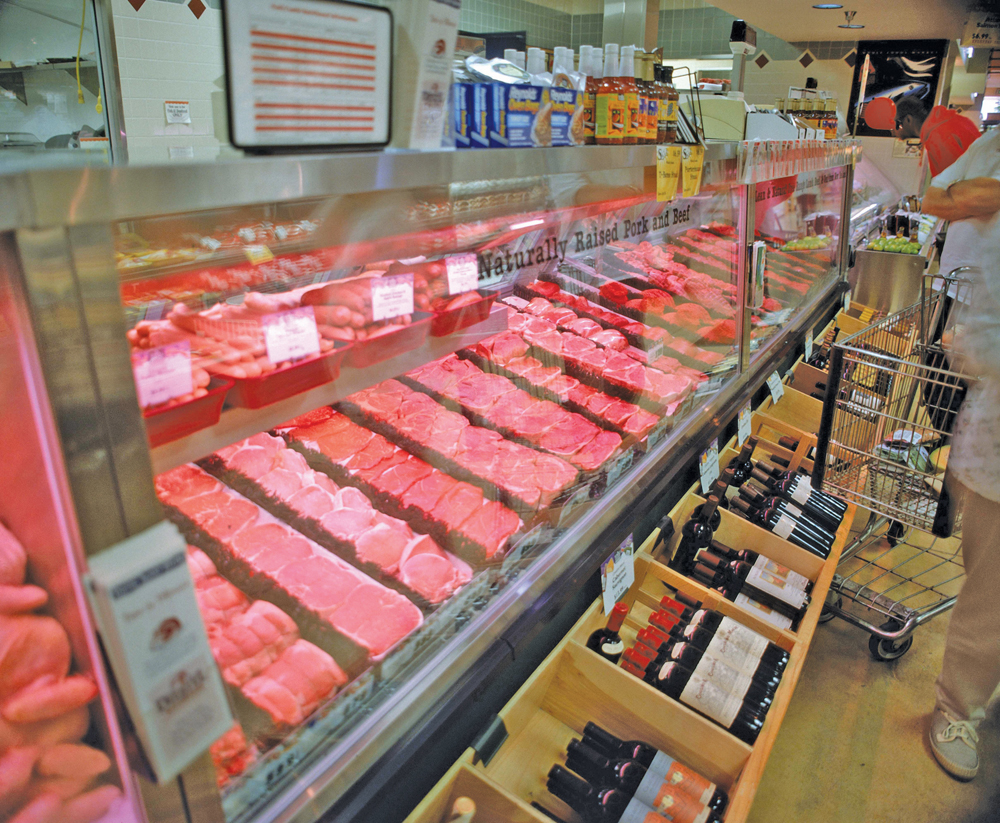The United States has three months to repeal its country-of-origin labelling program on beef and pork imports before Canada and Mexico will proceed with billions of dollars’ worth of retaliatory tariffs on American goods.
In the wake of the World Trade Organization’s final decision May 18 that COOL violates international trade rules, the House of Representatives agriculture committee approved a plan to labelling laws. The chairman of the committee has said he expected an early-June vote on the bill.
U.S. Agriculture Secretary Tom Vilsack says changing the law is the only way to avoid having American food and consumer good exports to its two neighbours hit with hefty duties.
Read Also

CUSMA access key among other trade noise: Seeds Canada panel
Seeds Canada conference panelists say Canada needs to stay focused and wait as U.S. trade and tariff chaos develops, and a Canada-U.S.-Mexico Agreement review looms
“It’s clear that the U.S. must do the right thing and act quickly to repeal COOL or face billions in retaliatory tariffs,” said Agriculture Minister Gerry Ritz. Canada and Mexico will proceed with a request to the WTO for authorization to impose the tariffs hoping “just swinging this hammer will be enough to get the administration moving in double quick time in order to repeal COOL.
“It’s not Washington starting to move, it’s finishing the move to actually repeal COOL,” he said. “So it’s not the starting point, it’s the end point that counts. If it does not come through with the necessary administrative measures to repeal COOL, we have begun the process on retaliatory tariffs, which would take effect, by our best guess under the WTO process, in late summer or early fall,” he told reporters.
Tariffs
Ritz said the tariffs could amount to between $2.5 billion and $3 billion annually. Under the WTO rules, a country has to present the trade body with details of the harm done to it by another country’s policies before it can receive approval for imposing retaliatory tariffs. This can be done only after the WTO had completed its lengthy decision process.
Yet to make any comment on COOL changes is the Republican-dominated U.S. Senate agriculture committee, which could also have to approve any amendments.
In 2013, the government released a lengthy list of food and consumer items that could be included in the retaliatory tariffs. The government has been discussing the shopping list with food and consumer groups.
COOL was launched in 2008 and included labels on retail packages of meat that say where the animals were born, raised and slaughtered. The extra cost required to produce the information for those labels has cut imports of cattle and hogs from Canada by at least more than $1 billion a year.
COOL has supporters among northern U.S. ranchers, but has been strongly opposed to the U.S. meat industry, which has been urging its repeal for years — including meat processors that buy animals from abroad — have called for a repeal of the law, which they have fought for years.
Changes
After the WTO ruled twice that the 2008 version of COOL violated international trade rules, the Obama administration made changes. Canada and Mexico said the new rules made the impact of the law even worse. The WTO has issued its final rejection of the revised rules and called on the U.S. to act on the decision.
Ritz says COOL was “a wrong-headed political initiative that continues to do serious harm to our integrated beef and pork industries through North America. COOL is a political solution to a problem that never existed.”
The USDA recently reported that COOL “has cost the American beef and pork sectors billions with no benefit to American consumers,” he noted. “COOL is casting a dark cloud over trade and called on Congress to repeal COOL to prevent the loss of some 16,000 jobs stateside.”
Launched in 2008, COOL has cost cattle and beef producers more than $8 billion in lower prices and lost sales.
Rick Bergman, chairman of the Canadian Pork Council, said the WTO decision “is comprehensive and compelling. There is no wiggle room. Congress must accept the reality and act as a responsible WTO member and a leading force for trade liberalization.”
Dave Solverson, president of the Canadian Cattlemen’s Association, urged Congress to respect the WTO ruling that Canada has the right to fair market access. Pressure has to continue to ensure “the U.S. meets its international trade obligations.”
Joe Reda, president of the Canadian Meat Council, said the U.S. helped create the WTO trade rules and has a duty to respect them. “Seven years is much too long for a country to profit from ignoring the law.
“The time when the government of the United States should have brought its rules into conformity with its obligations passed long ago,” he added. “The U.S. is out of recourse mechanisms. It must eliminate the discrimination to avoid retaliation. This can be achieved by repealing COOL.”
The WTO had ruled the 2008 version of COOL was discriminatory against Canada and Mexico and that 2013 amendments to it not only failed to correct its violations of trade rules, they exacerbated the discriminatory nature of the rule,” added Jim Laws, executive director of the Meat Council.
“This is certainly good news for producers, but we will have to wait for the final announcement from the U.S. on what its stance is going to be,” said Manitoba Beef Producers president Heinz Reimer.
Reimer notes that Manitoba cattle producers have had a rough few years with multiple floods, diminishing prices and have often experienced the brunt of repercussions from COOL due to close proximity to the border.
“We are centrally located in Canada and so a lot of our feeder cattle or yearling calves have gone down to the U.S. and a lot of the U.S. plants have turned away Canadian animals.”
Though COOL remains in place for the moment, Reimer believes that Canadian cattle producers should look at this as a step in the right direction.
“This is certainly a win but we haven’t won. I do believe that with this ruling we have a far better chance of COOL going away,” he said. “One thing we need to remember with the cattle industry, we can’t push up our numbers overnight or within a short period. It will take two to three years before we can push up our numbers for marketing.”



















